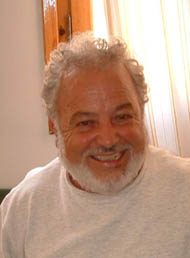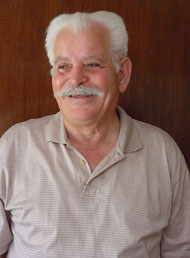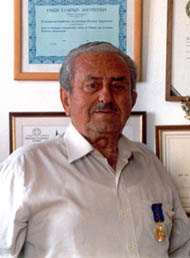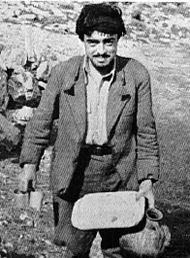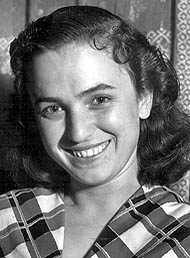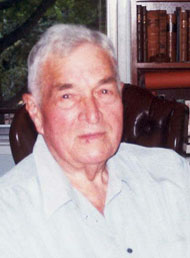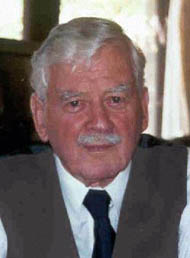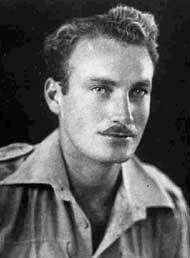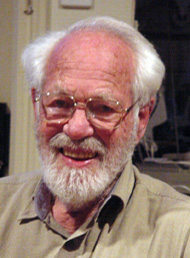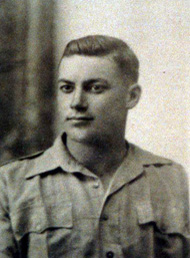Military History
Military history has a great following in Australia, so it is perplexing that military historians have ignored the battles of Greece and Crete. In fact, war history is very popular worldwide, which makes the neglect the Greek and Crete campaigns even more pronounced. Veterans of the campaigns believe this is because people do not want to read about ‘defeats’ only ‘victories’. If that was the case, surely Gallipoli would have been forgotten years ago. Some historians have suggested this is because the Greek and Crete campaigns were strategically insignificant, as they did not affect the outcome of Second World War. The Greeks and their allies would beg to differ, claiming that Crete in particular delayed Nazi Germany’s invasion of Russia. Even if this is not true, the Greek campaigns were important for Australia as its soldiers constituted the largest number of front line or fighting troops. In the first couple years of the Second World War it was mainly the Dominion troops who were fighting the war on behalf of Britain, as the United Kingdom had decided to keep most of its forces behind to defend the mother country from possible invasion.
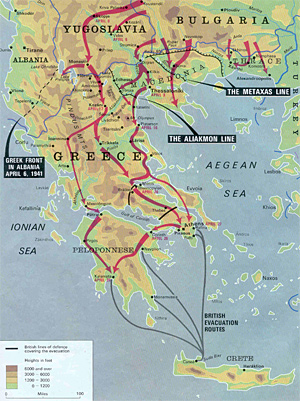
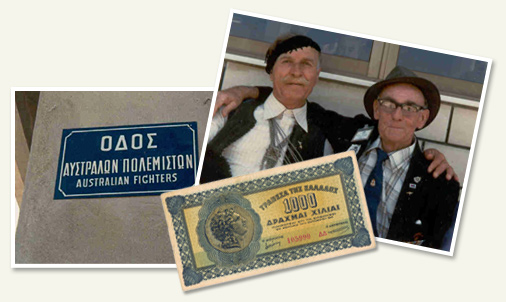
Research for Diggers and Greeks
Maria has spent the last eight years researching and writing about the Australian campaigns in Greece and Crete. This involved a significant amount of research at the Australian War Memorial that contains close to 2,000 items relating to the Greek and Crete campaign of 1941. The National Archives of Australia are also has valuable information on these campaigns as does the National Library of Australia including others repositories in the country. She also ordered from Britain copies of all the operational reports pertaining to Greece and Crete including the reports by their intelligence operatives. Not satisfied with obtaining British accounts of the battles of Greece and Crete Maria commissioned Archives New Zealand to conduct research on them as well in their repository.
Maria however did not restrict her investigation to Australia. In 2003, with the help of an Australian Army History research grant she travelled throughout mainland Greece and to the island of Crete to examine their archival records. Maria was able to gain access to the records of the Diplomatic and Historical Archives and the Greek Military archives in Athens. It does help that she speaks, reads and writes Greek.
She subsequently flew to Thessaloniki in northern Greece to walk the battlefields where Australian and Greek soldiers fought near the border with Albania. This was a real eye opener – experiencing the steepness of the Greek terrain and the narrowness of its roads first hand, helped Dr Maria Hill understand how perilous the journey was for the Australian troops ordered to fight on Greece’s northern frontier in one of the coldest winter, without adequate clothing, weaponry or transport.
Maria also visited the military museums throughout the country as well as the newspaper offices and the regional offices of the General Archives of Greece. One of the most enjoyable part of her trip however was having a coffee and chat at the local K.A.P.I. or Senior Citizens Clubs throughout Greece with the Greek veterans and civilians who helped allied soldiers, recording their memories of those years. Maria finds oral history a very useful tool for researching the past because it captures the ‘feelings’, ‘emotions’ and ‘attitudes’ of the soldiers and civilians involved in the conflict.
Maria Hill’s aim in writing Diggers and Greeks was to put human relations at the forefront of any discussions of these campaigns. For too long military campaigns have been viewed through the prism of military strategy, as if people’s emotions, temperament and behaviour have no bearing on what occurred in the battlefield and beyond.
It is difficult to imagine, after reading Maria’s book that human relations can be left out of the study of war.
Personalities
Political
Australian War Cabinet - made up of National-Liberal and Labour members of parliament
Robert Menzies - Prime Minister
Sir Percy Spender – Minister of Defence
Sir Henry Gullet – Minister of Information
Frederick Shedden - Secretary of the Department of Defence
Rt. Hon Sir Arthur Fadden KCMG - Treasurer and Member of the Australian War Cabinet 1940-41, Prime Minister Aug-Oct 1941.
Military
General Sir Thomas Blamey – Commander of 1st Australian Corps
Brigadier Sydney Rowell – Blamey’s Chief of Staff in the Middle East
Lieutenant Colonel John Rogers – Blamey’s senior Intelligence Officer in Greece
Major General Iven McKay – Commander of the 6th Australian Division
Colonel Alex Sheppard – General Iven McKay’s Liaison Officer– spoke Greek and French. His liaison area was V-shaped zone between the Vevi gap, Mackay’s Headquarters at Soti, Greek Headquarters in the town of Kozani and the Veria Pass
Brigadier George Vassey or ‘Bloody’ George – Commander 19th Brigade
Captain T. Luxton – liaison officer - 19th Brigade HQ
Lieutenant Reg Holmes - intelligence officer –19th Brigade
Brigadier ‘Tubby’ Allen – Commander 16th Brigade
Lieutenant C. Norman. Swinton – Liaison Officer 16th Brigade Headquarters
Captain Lovell – intelligence officer 16th Brigade
Brigadier Savige – Commander 17th Brigade
Lieutenant Ian Lowen - Liaison officer 17th Brigade HQ
Corporal G. [George?] J. Caling of the 2/2nd battation - could speak Greek and was used as an interpreter by Chilton his commanding officer
Ian Sabey - intelligence officer in Greece under Brigadier John Rogers and Ken Wells
Robert Roy Vial - 2/7th Infantry Battalion- assigned as intelligence officer to 6th Div Headquarters in Greece
Lieutenant Fleming – Intelligence officer to Mitchell who was commanding officer of 2/8th Battalion- 19th Brigade
Political
Sir Winston Churchill - Prime Minister and Minister for Defence
Anthony Eden - Foreign Secretary
Sir Alexander Cadogan – Permanent Under-Secretary at the Foreign Office
Sir Miles Lampson – British High Commissioner in Egypt
Lord Cranbrook
Diplomatic
Sir Michael Palairet – British Ambassador to Greece
Harold Caccia – First Secretary at the British Legation (Crete?)
Military
General Wavell – Commander-in-Chief of the Middle East
General Arthur Smith - Wavell’s Chief of the General Staff at GHQ Middle East
General Dill – Commander- in-Chief of the Imperial General Staff
General Maitland ‘Jumbo’ Wilson - Commander “W” or Lustreforce- British Expeditionary Force to Greece 1941
Sir Francis De Guingand - junior staff officer
British Military Mission in Greece
Major General Gambier - Parry – head of British Military Mission to Greek army [well liked and trusted by Greek General Staff]
Colonel Jasper Blunt – British Military Attaché to Greece – only British officer to have reconnoitred the threatened North - East before the Greek General Staff vetoed further visits.
Major General T. G. Heywood replaced Gambier – Parry as Head – previously had been the Military attaché in Paris prior to the fall of France, unrealistically optimistic about the Greeks. [Not considered competent and distrusted by the Greek military.]
Major Stanley Casson – appointed ahead of Jasper Blunt- the obvious choice as senior intelligence officer by Heywood. Casson had been Reader in Classical Archaeology at New College Oxford and a former W.W.I. veteran- quite brilliant.
Colonel Quilliam – brought from GHQ Middle East by General Maitland Wilson to be his chief of intelligence in Greece because he was dissatisfied with Stanley Casson.
Prince Peter of Greece – British mission’s liaison officer with the Greek government. [He was King George II’s young cousin and anthropologist who had spent a long time in the Himalayas.] Anglophile
British Military Liaison to Greek Military Headquarters
Colonel Guy Salisbury-Jones – Chief of staff for operations
Lieutenant Colonel Peter Smith-Dorrien - Salisbury 2/IC
Michael Forrester - who distinguish himself in Crete as the leader of the irregulars in the battle against German paratroopers worked for Salisbury-Jones.
Charles Mott-Radclyffe – a diplomat turned soldier
Lieutenant Colonel A. R. Barter – leader of a British liaison team attached to the staff of General Tsolakoglou commanding the Western Macedonian Army. Barter spoke Greek and acted as the interpreter for a meeting between General Savige, commander of the 17th Brigade and General Tsolakoglou
MI (R) Military Intelligence (Research) [Secret service] later was merged into SOE
Peter Fleming – traveller and writer brother of writer Ian Fleming was a reserve officer in the Grenadier Guards and head of the Yak Mission due for Yugoslavia but ended up in Greece training Greek resistance group and help with sabotage.
George Young - a sapper officer in Royal Engineers move to Roumania to blow up the Ploesti oilfields. [took part in a in a rearguard action in Crete]
John Pendlebury – archaeologist and one time curator of Knossos at Heraklion was sent to Greece under the guise of Vice-Consul. After the Italian invasion reverted to his cavalry captain’s uniform.
SOE or Special Operations Executive: [Secret Service]
George Pollock – head of SOE in Cairo
Monty Woodhouse – A classics scholar who spoke modern Greek was only 24 when he went to Greece in 1941 as part of the British Military Mission. During the occupation of Greece he worked for the Special Operations Executive or S.O.E. and spent the winter of 1941-42 helping allied soldiers hiding in Crete to escape. In 1942 he was working with Greek resistance fighters on the mainland hindering German supply lines to Egypt. By 1943 at the age of 26 he became a Colonel commanding the Allied military mission to the Greek resistance.
Nicholas Hammond – Another classics scholar who spoke modern Greek and Albania was also recruited to S.O.E. Born in 1907, he was ten years older than most of his contemporaries sent to Greece. He taught sabotage techniques to Greek communists blowing up the Gorgopotamos railway viaduct in November 1942. In 1943 disguised as a Vlach shepherd he conducted clandestine activities in Thessaly.
Patrick Leigh Fermor – attached himself t a Greek cavalry regiment during the Venizelist revolution in 1935 and later assisted the Cretan resistance.
Bill Barbrook
Ian Pirie – formerly of Section D – had a girl friend Nicki Demertzi, the devastating blonde at the Argentina night-club in Athens.
RAF Intelligence Staff
Wing Commander Viscount Forbes – head of RAF Intelligence formerly Air Attache in the Bucharest Legation
David Hunt – arrived in Athens in November 1940 – as staff captain intelligence he processed intercepts, both Ultra and the lower-grade but more immediate material.
Geoffrey Household – field security officer
Captain Bill Makower – British intelligence officer - Commander of the British 101 Wireless Section in the mosque at Elassona in northern Greece.
Political 1936 - 1941
King George II – King of Greece during World War II
General Ioannis Metaxas – Military dictator – appointed by the King in 1936. President of the Council. Metaxas had been a student of the Prussian military academy. Died 29th January 1941
Alexander Koryzis – President of the Council upon the death of General Metaxas 29th January 1941 suicided …April 1941
Nicholas Papademas – Minister of War
A. Apostolides – Minister of Finance
John Arvanitis – Minister of National Economy
Nikolaos Mavroudis – Permanent Undersecretary for Foreign Affairs
Alex Kyrou – head of the Greek Foreign Ministry
Constantine Maniadakis – Chief of Police and Undersecretary for public security
Georgios Merkoures – former Greek cabinet minister
Papavassiliou – Naval Undersecretary
Theologos Nikoloudis – Undersecretary for Press and Tourism
Diplomatic
Emil Vrisakis – Honorary Consul General of Greece in Sydney
John Politis – Greek Ambassador to Rome
Charalambros Simopoulos – Greek Ambassador to Britain
Alexander Rizo-Rangabe – Greek Ambassador to Germany
Admiral Perikles Argyropoulos – Greek Ambassador to Spain
Colonel Apokoritis – Greek military attaché to Turkey
Military
General Alexander Papagos – Commander-in-Chief of the Greek Armed Forces
Colonel Petinis – Chief of Staff of the Army of Northern Greece
General Ioannis Pitsikas – Commander of the Epirus Army/ Commander of the Western Macedonian Army (III and IV Army Corps)
General Georgios Tsolakoglou – Commander of the III Army Corps, mutinied and signed an armistice with Commander of the SS “Adolf Hitler” Division in Epirus on 20th April 1941. Tsolakoglou became quisling Prime Minister of a government installed by the Germans under occupation.
General Kotoulas – Commander of the Central Macedonian Army: the two Greek divisions in the Vermion mountains north of Veria: [the Greek forces on the Aliakmon line -headquarters at Kozani
Major General Christos Karassos, G.O.C. Central Macedonian Army Group - replaced General Kotulas at the Kozani Greek Army headquarters, after complaint lodged by General Thomas Blamey to General Papagos
General Konstantinos Bakopoulos – Commander of the Greek forces on the Metaxas line
General Kosmas – Commander of the I Greek Army Corps
GREEK GOVERNMENT-IN-EXILE 1941-1944
Panayotis Kanellopoulos – 1902-86 Greek writer and political leader. A professor of sociology at the Univ. of Athens he was in the resistance and in the Government-in-Exile he served as deputy premier and war minister.
Political
Joachim von Ribbentrop – German Foreign Secretary
Ernest von Weizsaecker – State Secretary
Admiral Wilhelm Canaris of Abwehr II – Chief of German Armed Forces Foreign Service Intelligence Branch
Timeline of ANZACs in Greece
|
1 March 1941
|
General Maitland ‘Jumbo’ Wilson arrives in Greece |
|
17 March 1941
|
2/3rd Australian Infantry Battalion embark for Greece on the cruiser GLOUCESTER – General Blamey & several of his staff on board. |
|
18 March 1941
|
2/1st and 2/2nd Australian Infantry battalions under the command of Brigadier Tubby Allen of the 16th Brigade embarked on the BANKURA & IONIC for Greece. Arrive Athens 22nd March. |
|
19 March 1941
|
General Blamey arrives in Athens |
|
22 March 1941
|
General Blamey and his chief of staff officer, Brigadier Rowell reconnoitre north of Athens visiting the Greek corps commander at Kozani and the 12th and 20th Greek Divisions and New Zealand Division. |
|
24 March 1941
|
2/3rd Battalion arrives at LARISSIA at the camp known as TEMPE situated about 7 miles west of LARISSA, and ½ mile south of PINIOS River |
|
1 April 1941
|
* 2/4th & 2/8th Australian Infantry Battalion embarks
for Greece under command of George Vasey of the 19th Brigade on the SS PENNLAND. Arrives in Athens 3rd April
2/2nd Infantry Battalion at SERVIA PASS |
|
2 April 1941
|
Afrika Korps under the command of Erwin Rommel capture Libya, as a result 7th Australian Division and Polish Brigade are not deployed to Greece by Wavell. |
|
3 April 1941
|
2/8th Australian Infantry Battalion arrives at Port Pireaus General Iven Mackay reaches Athens. |
|
4 April 1941
|
|
|
5 April 1941
|
General Wilson formally takes command of the Allied
forces in Central Macedonia with an advanced head-
quarters at Tsaritsani a village near Elasson on the
main Larisa-Florina road.
* General Kotoulas confers with General Wilson at Kozani. |
|
6 April 1941
|
German troops simultaneously invade Greece and Yugoslavia
German planes bomb Pireaus Harbour setting alight munitions barge and destroying port facilities |
|
7 April 1941
|
2/2nd Infantry Battalion has moved up to VERRIA PASS
* Mackay and his staff exchange some information with the commander of the 12th Greek Division in French but a slow and irritating process |
|
8 April 1941
|
Major General Christos Karassos, the commander of the 20th Greek Division replaces Lieutenant
General Ioannis Kotoulas as commander of the Central Macedonian Field Army
Yugoslav resistance collapse without fighting to the Germans |
|
9 April 1941
|
Lt General Georgios Bakopoulos commander of the
forces guarding METAXAS line on the Bulgarian -
Greek border, surrenders to the commander of the
2nd German Armoured Brigade signing the protocol
of capitulation at the German Consulate at Salonika.
Wilson orders a withdrawal to the Aliakmon line. 2/5th & 2/6th Australian Infantry Division under the commander of Stan Savige of the 17th Brigade embark on the CAMERONIA for Greece General Mackay meet with General Karassos at Kozani – meeting of no value due to difficulties in communication. |
|
10 April 1941
|
Wilson confers with Mackay and General Karassos,
who had replaced General Kotoulas in command of
the Central Macedonian Army.
Florina captured by the Germans |
|
11 April 1941
|
2/2nd Infantry Battalion given order to withdraw |
|
12 April 1941
|
1st Australian Corp renamed ANZAC Corp by Blamey
2/1st Infantry battalion at VERRIA PASS 2/5th & 2/6th Australian Infantry arrive in Greece Greek Army in Northern Epirus ordered to withdraw. Colonel Petinis Chief of Staff of the Army of Northern Greece negotiating with the Germans. Western Macedonia Field Army Section [WMFAS] began withdrawing towards Epirus via PINDUS MOUNTAINS on the order of General Tsolakoglou |
|
13 April 1941
|
EFAS or Epirus Field Army Section withdraws as troop morale begins to decline
Wilson receives intelligence reports that Greek units on his left (West) are disintegrating and cannot be relied on |
|
14 April 1941
|
From this day onwards the Australians cease to take into account any support from the Greeks.
Katerini attacked and captured by Germans |
|
15 April 1941
|
Wilson gives order to Blamey to withdraw forces to
Thermopylae line
Wilson meets with Wavell and decides to evacuate forces from Greece |
|
16 April 1941
|
Papagos asks to meet with General Wilson at
LAMIA at 6 o’clock in the morning. Papagos informs Wilson that Greek Army at Klisoura Pass
has been lost and Western Macedonian divisions had taken to the mountains likely to turn up at KALABAKA.
* Brigadier Savige meet with General Tsolakoglou in village just outside KALABAKA. Tsolakoglou informs him that he has assembled his ‘Armies of Macedonia’ in the PINDUS MOUNTAINS. Savige felt Tsolagolou did not intend to fight and would double-cross them. Tsolakoglou abandons his troops. * Germans seize KALABAKA and interpose their forces between the British Expeditionary Corps and the Greek Army withdrawing from Albania * 2/2nd Infantry Battalion reaches SERVIA-LARISSIA ordered to PINIOS RIVER area to support 21ST N.Z. battalion |
|
17 April 1941
|
2/2nd Infantry Battalion reaches PINIOS pass – moves into battle position |
|
18 April 1941
|
Germans attacked the 16th Australian Brigade at
Pinios Gorge and the 6th NZ Brigade at Elasson
* Meeting at Palace with King, Koryzis, Palairet, General Wilson, General Papagos and Pappademas. Wilson says British will hold at Thermopylae only if Greeks continue to fight in Epirus otherwise British will evacuate from Greece * Alexander Koryzis, Prime Minister of Greece commits suicide after this meeting |
|
19 April 1941
|
Meeting held at General Headquarters attended by
Wavell declares British Army will defend provided
Greek Army continued to resists! Decided that
Greeks would resist until British were evacuated.
Also present Gen. Hewitt and
Col. Kitrilakis to keep the minutes.
* 2/11th Battalion joined the brigade for the first time in Greece, Major R. L. Sandover was in command having taken over from Colonel Louch who was injured on this day. |
|
20 April 1941
|
Lieutenant General Tsolakoglou signs unauthorised armistice with Major General Dietrich, Commander
of the Adolf Hitler SS Bodyguards at Votonosi village in Metsovo
* German troops capture Trikkala and Larissa |
|
21 April 1941
|
Lieutenant General Pitsikas resigns his command
after being ousted by Tsolakoglou and leaves for Athens.
* Emanuel Tsouderos of Crete sworn in as Prime Minister. |
|
22 April 1941
|
German troops occupy Volos and Lamia |
|
23 April 1941
|
Greek King George II and his Government depart for Crete. Commander-in-Chief Alexandros Papagos resigns. |
|
24 April 1941
|
Evacuation of Australian forces from Greece brought
forward to this night because of Tsolakoglou ‘s
unauthorised capitulation
* Germans attacked THERMOPYLAE line held by the 6th NZ Brigade on east and 19th Australian Brigade on west. * German tanks try to break through the New Zealanders while mountain troops attack the high BRAILLOS PASS held by the Australians. The New Zealanders destroyed twelve tanks and together with the Australians hold their ground. * 19th Australian Brigade engage the German 6th Mountain Division in fierce battle at BRALLOS PASS * That night they withdraw from THERMOPYLAE line. |
|
25 April 1941
|
19th Brigade embarked that night from MEGARA.
General Blamey departs from Greece with his son and Chief of Staff Brigadier Rowell to Alexandria. |
|
26 April 1941
|
800 German parachutists drop on Corinth Canal
16th and 17th Australian Infantry Brigades embark at KALAMATTA. |
|
27 April 1941
|
ATHENS occupied by Germans without any resistance.
* 4th New Zealand Brigade embarks at Porto Rafti. * 1st British Armoured Brigade departs RAFINA. |
|
28 April 1941
|
* 6th New Zealand Brigade embarks at
MONEMVASIA with Major Freyberg for Crete.
* 1,700 men in NAFPLION are taken prisoners. |
|
29 April 1941
|
10,000 men consisting of 8,000 British and Australian soldiers and approximately 2,000 Men of Yugoslav, Cypriot and Palestinian Soldiers and Greek civilians remain in KALAMATTA. 7,000 are captured and 3,000 flee into the hills |
|
30 April 1941
|
Last British troops on Greece are either captured or escaped and hostilities cease. Approximately 1,400 British troops who remain in Greece without capture escape to Crete, Chios and the Aegean island as well as to the coast of Asia Minor. |
|
1 May 1941
|
A detachment of 2/5th Australian General Hospital under Major Brooke Moore remain in Greece becoming prisoners of the Germans in order to look after 112 patients too ill to move. Germans take the hospital's portable X-ray machine to replace their own. |
|
2 May 1941
|
Hitler orders that Greek officers and soldiers are no longer prisoners of war but after surrendering their armament are disbanded and allowed to go home. |
|
3 May 1941
|
Germans and Italians conduct a triumphant parade through Athens before Marshal List with the absence of the population who stay inside their homes. |
Timeline of ANZACs in Crete
|
20th May
|
Maleme and Canea
Early in the morning of the same day a large force of bombers and fighters attack round Maleme and Canea. Transport planes - some towing gliders landed west of Maleme while others spilled out paratroops. Many paratroops were shot down before they reached the ground. Two pockets of German troops captured the vital area around Maleme airfield west and south in the hills.
Rethymno or Retimo - in the afternoon of the same day the planned German landing at Retimo took place. Most of the paratroopers were overcome but at the end of the day one group had a strong hold on the ridge south-east of the airfield and others were astride the road leading west. Heraklion – paratroopers were killed or captured, except small parties, but some Germans gained a foothold in the town itself. |
|
21st May
|
Maleme- western flank of New Zealand Division held its ground under heavy attack
but control of the airfield had been lost and that afternoon German aircraft began
landing in a steady stream bringing a battalion of the mountain division. At the end of the second day of fighting the Germans had achieved their main objective. Late in the afternoon Freyberg decided to conduct a two-battalion attack on Maleme that evening, once the New Zealand battalion was replaced with one of Vasey’s battalions from Georgioupolis so it could participate in the attack. Although the New Zealanders temporarily gained some ground that night, they failed to achieve the main objective of recapturing the airfield.
The German plan was now to send the mountain troops on a wide outflanking move over the hills south of the New Zealanders. That evening the Germans in the hills attached north but were driven back by heavy fighting. The airfield was now believed to be lost so the New Zealanders withdrew the western flank to the a creek some two miles to the east. At Retimo that day 2/1st Battalion dislodged the Germans from the heights south-east of the airfield but a group remained astride the roads both west to Chania and east to Heraklion. At Heraklion the Germans had gained no vital ground round the airfield but again were astride the coast road both east and west. |
|
22nd May
|
Although Campbell’s forces attacked both east and west they failed to open the roads. |
|
23rd May
|
The New Zealanders carried out their withdrawal with the Germans following closely. That night there was a further withdrawal. A further withdrawal occurred that night. The line covering Canea and Suda Bay was now held by the 4th Brigade on the right and the 19th (2/7th and 2/8th Battalions) on the left. |
|
24th May
|
Two British commando units reached Suda Bay. Germans probed forward and at length began an attack on the New Zealanders which seemed likely to grow in intensity the next day. There were two airborne regiments and a mountain regiment concentrated against the weary New Zealand Division and a second mountain regiment moving towards Suda Bay through the hills where a Greek regiment was offering sturdy resistance. |
|
25th May
|
Hard fighting on the New Zealand front but in the evening a counter-attack decisively halted the Germans. Puttick doubted, however whether his line would hold another day and that night a further withdrawal was made. |
|
26th May
|
That morning, Freyberg informes Wavell that his position was hopeless. The Germans pressed hard all day. The mountain regiment in the hills was encircling the inland flank. At night a withdrawal was made past Canea to a new line at the head of Suda Bay, the Australians on the right and the New Zealanders on the left. |
|
27th May
|
The Germans followed fast and by 11am on the 27th May were nearing the new line, where 2/7th Battalion (Lieut-Colonel T. G. Walker), which had not yet been heavily engaged made a spirited charge in which the Maori Battalion and other joined. Perhaps 200 Germans were killed and the rest fled; the enemy made no further attack that day. On the afternoon |
|
28th May
|
British Brigadier Chappel in charge of the defence of Heraklion sector informs his own troops of the order to evacuate but does not inform the Greeks. 2/11th Australian Infantry Battalion fights a fierce final battle at Prevolia. Lieutenant Haig returns to Rethymnon with no message for Campbell from General Freyberg to retreat. |
|
29th May
|
Evening , commanders of the 4th and 5th Greek Regiments are informed that the defence of Western Crete has collapsed and the German forces are approaching from Chania.
German motorised detachment under the command of Major Witman seize Rethymnon without resistance. 5th Greek regiment is disbanded and those who are locals return to their villages. 4th Greek Regiment are order to surrender to the Germans by their commander. |
|
30th May
|
Midday, Lieutenant Colonel Campbell in charge of Retimo force, unaware that the order to evacuate had been issued, is encircled from all directions and surrenders his forces to the Germans. |

